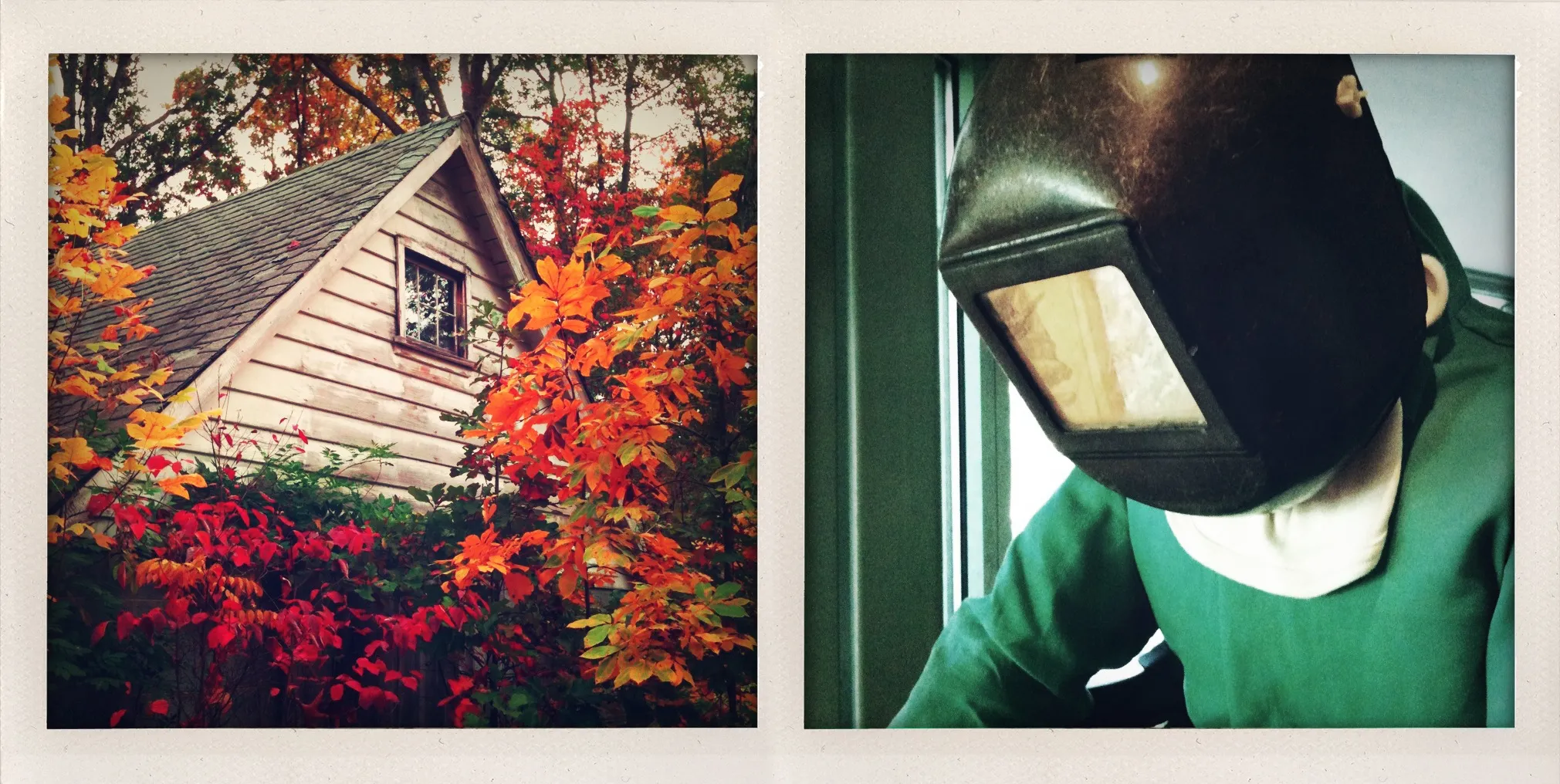The Project

This diptych pairs an autumn-framed house with a faceless figure wearing a welder’s mask. The left panel presents domestic comfort—vibrant fall foliage surrounding weathered white siding, a small window reflecting light but revealing nothing within. The right shows an anonymous worker in green, helmet obscuring all identity, absorbed in unseen labor.
The title “The Project” remains deliberately ambiguous: home renovation, obsessive construction, or something more sinister? The work taps into the common experience of passing a lit garage or basement window and wondering what’s happening inside—that mix of curiosity and unease about neighbors’ hidden activities. Both panels conceal—nature obscures the house, the mask denies human recognition. The diptych oscillates between the mundane and the menacing, suspending viewers between innocent curiosity and genuine threat.
Essay written: November 2025